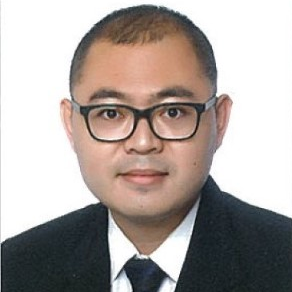Coatings for Advanced Devices
A special issue of Coatings (ISSN 2079-6412). This special issue belongs to the section "Surface Engineering for Energy Harvesting, Conversion, and Storage".
Deadline for manuscript submissions: 20 June 2024 | Viewed by 6052

Special Issue Editor
Interests: multiscale modelling; constitutive damage model; instrumented in situ indentation
Special Issues, Collections and Topics in MDPI journals
Special Issue Information
Dear Colleagues,
I would like to invite you to submit your work to this Special Issue on "Coatings for Advanced Devices".
As promising solutions in various practical and future applications, advanced devices have been developing rapidly in recent years, such as micro-electronics, optoelectronics, display panels, wearable personal healthcare, and many other devices. Thin film/substrate systems are significant in numerous critical engineering applications with the processing techniques of sputtering, vapor deposition, ion implantation, and laser glazing. The reliability of advanced devices relies primarily on how reliably the thin film/substrate works, thus the adhesion of thin film on the substrate has been of great significance as the interface. To address the severe challenges caused by harsh operating conditions in advanced devices, new coating methods and materials need to be developed, and thus, new coating technologies for advanced devices and substrates are necessary.
The Editor of the journal and the Special Issue will consider proposed publications in all areas related to new approaches in the synthesis, characterization, and evaluation of coatings and their interfacial effects on the substrate and the overall functions. The Special Issue highlights the opportunities and challenges in broadening the applications of coatings in advanced devices. For original research articles and reviews, the topics of interest include, but are not limited to:
- Electronic packaging for devices;
- Interface and surface reaction for joining materials;
- Processes for coating deposition and modification;
- Characterization and the corresponding methods of coatings;
- Evaluation and the corresponding methods of coatings;
- Coatings for high-temperature application;
- Fundamental and functional properties of surface and interfaces.
Prof. Dr. Xu Long
Guest Editor
Manuscript Submission Information
Manuscripts should be submitted online at www.mdpi.com by registering and logging in to this website. Once you are registered, click here to go to the submission form. Manuscripts can be submitted until the deadline. All submissions that pass pre-check are peer-reviewed. Accepted papers will be published continuously in the journal (as soon as accepted) and will be listed together on the special issue website. Research articles, review articles as well as short communications are invited. For planned papers, a title and short abstract (about 100 words) can be sent to the Editorial Office for announcement on this website.
Submitted manuscripts should not have been published previously, nor be under consideration for publication elsewhere (except conference proceedings papers). All manuscripts are thoroughly refereed through a single-blind peer-review process. A guide for authors and other relevant information for submission of manuscripts is available on the Instructions for Authors page. Coatings is an international peer-reviewed open access monthly journal published by MDPI.
Please visit the Instructions for Authors page before submitting a manuscript. The Article Processing Charge (APC) for publication in this open access journal is 2600 CHF (Swiss Francs). Submitted papers should be well formatted and use good English. Authors may use MDPI's English editing service prior to publication or during author revisions.
Keywords
- WBG power device packaging
- coatings or plating technology
- interface and surface reaction
- Pb-free solder
- Ag or Cu sinter joining
- evolution of interface
- high temperature application
- properties of surface and interfaces
- applied surface science





